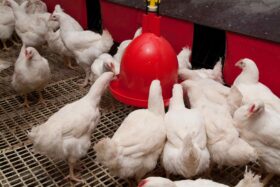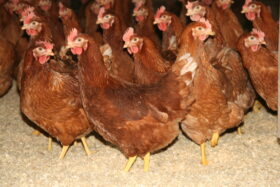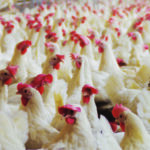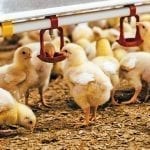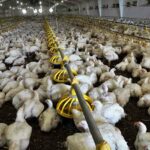Dr Daniel Valbuena, Global Manager of Technical Services, Hy-Line International – Conference Report
Feed and water management strategies are essential to help mitigate the negative effects of heat stress on bird welfare, production, and profitability. In EW Nutrition’s Poultry Academy in September, the topic was approached in a comprehensive and practical presentation.
Feed management
Feed consumption of the flock should be closely monitored during hot weather. It is important to rebalance the diet for critical nutrients, particularly amino acids, calcium, sodium and phosphorous according to the birds’ productivity demand (i.e., stage of production) and the observed feed intake. Insufficient amino acid intake is the primary reason for productivity loss during hot weather. Several strategies may be employed to help to manage elevated temperatures and maintain higher levels of feed intake:
- Withdrawing feed from birds 6 hours before peak hot temperatures in the afternoon can lower the risk of heat stress. Encourage as much consumption as possible in the early morning or evening. Using lighting for midnight feeding encourages feed intake.
- One third of the daily feed ration should be given in the morning and two thirds in the late afternoon. An additional advantage is the availability of calcium in the digestive system during shell formation at night and in the early hours of the morning. This will improve shell quality and reduce the birds from depleting bone calcium.
- Normally a maximum 1 hour for feeder clean-out time is recommended, but this can be extended to 3 hours when the temperature exceeds 36°C.
- Consider adding a 1-2-hour midnight feeding.
- Alter feed particle size, either by increasing it or by feeding a crumble diet. With crumble diets in laying flocks, a supplementary source or presentation of large particle limestone is recommended.
- Formulate diets using highly digestible materials, particularly protein sources. Metabolism of excess protein is particularly heat-loading on the bird. Formulate to digestible amino acid targets and do not apply a high crude protein minimum in the formula. Synthetic amino acids can reduce crude protein in the diet without limiting amino acid levels.
- Increasing the proportion of energy contribution from highly digestible lipid, rather than starches or proteins, will reduce the body heat production resulting from digestion. This is known as heat increment and is lowest with the digestion of dietary fat.
- The bird’s metabolizable energy requirement decreases as ambient temperature increases to above 21°C, resulting from a reduction of energy requirements for maintenance. The energy requirement will decrease with the rise of temperature up to 27°C, above which it will start to increase again since the bird needs additional energy for panting to reduce body heat.
Management schedule during times of heat stress
Water management
During periods of high environmental temperature, birds have a high demand for drinking water. The water-to-feed consumption ratio is normally 2:1 at 21°C but increases to 8:1 at 38°C. Adequate drinking water must be available to heat-stressed flocks. Ensure that drinkers have sufficient water flow (>70 mL/minute/nipple drinker). If water flow is less the lines need to be checked for flow restriction. If there’s a build-up of iron and other minerals, it needs to be removed. Don’t forget to routinely check water filters and replace them as needed.
It’s easy to overlook a non-functioning drinker here and there; drinkers must be systematically checked to make sure they’re all working. For floor-reared flocks, providing additional drinkers can help accommodate the increased water consumption.
During hot weather, you need to ensure your water system can accommodate the bird’s increased water consumption, and the additional water demands for foggers, evaporative cooling systems and roof sprinklers. The availability of drinking water to a heat-stressed flock should never be compromised.
Cool water temperatures (<25oC) will encourage the birds to drink and reduces the birds’ core temperature. Flush water lines and waterers routinely to keep the water fresh and cool, increasing water consumption, and sustaining egg production. If available, ice can also be added to header tanks. When mechanical cooling systems fail, water flushing can serve as an emergency measure during heat stress.
Drinking water from overhead water tanks can become hot if exposed to direct sunlight. These water tanks should be a light color, insulated and covered to avoid direct sunlight. Water tanks are ideally placed inside the house or underground. Water pipes in the house should not be installed close to the roof to avoid heat from the roof warming up the water in the pipes.

Use vitamin (A, D, E and B complex) and electrolyte supplements in the drinking water to replenish the loss of sodium, chloride, potassium, and bicarbonate in the urine. Electrolyte supplements are best used in anticipation of a heat stress period and can be added to drinking water for up to 3 days.








